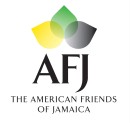Martinique based historian, art critic and independent curator Matilde dos Santos, who was one of the guest curators/mentors selected to conduct studio visits with 6 of the 24 CATAPULT Stay Home Artist Residency participants, has generously offered to write features on each of the artists she engaged with during the programme. The fourth piece focuses on the practice of Martinican artist Gwladys Gambie!
Read the article, originally published in French on Madinin’Art: Critiques Culturelle de Martinique (January 10th, 2021), in English below!

Gwladys Gambie, Incandescent scars
In August 2020, Fresh Milk (Barbados) and Kingston Creative (Jamaica), with the support of the American Friends of Jamaica (United States), launched CATAPULT | A Caribbean Art Grant, a programme which, through six initiatives, provided direct financial support for five months to more than 1,000 Caribbean artists and creatives affected by the pandemic. One of these initiatives was the Stay Home Artist Residency (SHAR). Twenty-four artists were selected and the residencies were spread out into three groups from September 21 to December 11. I was delighted to be one of the visiting curators, and it is a pleasure to share the outcomes of these meetings with you.

Cartographie sensible (detail) SHAR residency November 2020, courtesy of the artist
Gwladys Gambie, an artist from Martinique, was selected for the home residency opportunity, so I was able, between one confinement and the other, to visit her studio in person.
Gwladys was born in Fort de France in 1988. After studying literature and education, she entered the Caribbean Arts Campus and obtained her DNSEP (Master) in Visual Arts in 2014. Gwladys’ work explores her own body and revolves around the character Manman Chadwon (mother sea urchin), a kind of divinity invented by the artist. Through drawing, collage, sculpture, sewing or embroidery, the artist works with voluptuous body shapes adorned with thorns, forceful yet evanescent. In recent years the artist has participated in several residencies, including Création en cours initiated in 2018 by the Ateliers Médicis in Guadeloupe and Caribbean Linked V organized by Ateliers’ 89 and Fresh Milk in Aruba. She has also participated in the Fountainhead Residency, in Miami (2019) and most recently the CATAPULT SHAR. Gwladys also participated in the international exhibitions Désir Cannibale at the Little Haiti Cultural Center in Miami, as part of the Tout-Monde Festival (2019), and in the Mercosur Biennale (2020), held on-line due to the COVID pandemic.

Corps paysage, felt on paper, 2018, 65 x 50 cm. Courtesy of the artist.
In her drawings, the female body is laid out into a dreamlike landscape. All-powerful femininity displays full bodies assuming their sensuality. Paradoxically, the delicacy and precision of the drawing impart a kind of harshness. It’s Manman Chadwon, Afro-Caribbean deity, a bit Mami Wata, a bit Manman Dlo, her body bristling with quills. An avatar of the artist that incorporates both softness and pain.
In her drawings, black and white dominates. Color comes in small touches and until recently, almost always by collage. Then, there is the red ink, connecting her work to the present day violence: against women, or the soil in Martinique poisoned by chlordecone. Emanating from these bodies drawn in black or red are real ecosystems supporting minerals, plants, and animals. In an organic landscape, the body spreads out, secretly forming folds that both enclose and exhibit.

The birth of Manman Chadwon, 2018, ink, collage on paper, 75 x 100 cm, courtesy of the artist

Cartographie sensible (detail) SHAR residency November 2020, courtesy of the artist
We can link Gwladys’ work to that of female artists, who since the 1960s have built a feminist aesthetic designed to liberate women’s imagination. The work of many artists who do not claim to be feminists shares common traits none-the-less with the feminist movement as a whole, such as the affirmation of the body and the deconstruction of stereotypes, or in the practice of strictly feminine crafts, such as embroidery and sewing, which triggers a subversion of hierarchies by promoting what was usually considered as subordinate. A combined concern for issues of gender, race, ethnicity and social class forms the basis of a feminism that is reinventing itself today through the enhancement of an exacerbated femininity, which, rather than denying sexist stereotypes, reappropriates them and throws them back in the face of the public. In its pop version, this appears in the form of vertiginous heels and superlative “bondas”. Gwladys’ femininity is radical, yet poetic; assuming violence portrayed by omnipresent thorns that render both pleasure and protection. Thus, we can compare her works to those of the Haitian artist, Florine Démosthène, and her round heroines endowed with monumental buttocks, as doubles of the artist. Her work is also comparable to White shoes (2015), a performance of the photographer Nona Faustine, who exposed her own ‘unconventional’ naked body perched on white pumps while she browsed places linked to slavery in New York, such as Wall Street, an ancient slave market. Or, yet again, to the drawings of black women by Rosana Paulino, their bodies always round, always a little the artist herself, or to Paulino’s use of sewing to roughly patch up photos of naked slaves, or the way she obliterates the eyes, throats or mouths of black women by stitching over them as if to emphasize the state of servitude in which they are found, while their photos are delicately presented on embroidery hoops.

Cartographie sensible (work in progress) SHAR residency November 2020. Photo by Matilde dos Santos
Gwladys’ works breed rebellion: against stereotypes of black women’s bodies, against objectification and fantasies of sexuality tainted with exoticism. The artist would like to reinvent eroticism, with drawings of a touching sincerity: full bodies, black skin, challenging the canons of beauty. Thorny bodies, triple breasts, powerful yet fragile bodies; vulnerability as a weapon. To make the body of the black woman, for a long time the territory of all oppressions, a decolonial body: neither in the Western norm, nor against it, but rather outside the norm. Rooted in ancestrality.
The link with African ancestrality has been widely claimed in recent years by artists from the diaspora. With Gwladys this demand is visceral, as the need to examine oneself, to express oneself. The use of Creole, and poetry, which invade certain drawings, goes without saying. This is because Creole goes straight to the heart of things. A language that is very imaginative yet straightforward, like the visual language of Gwladys.

Ambulatory performance, The beautiful monster, FIAP 2017, Fort de France. Courtesy of the artist
For the SHAR programme, Gwladys experimented with needlework. Her particular affinity with sewing was noticeable in her work with “grennen” (frizzy) hair while she was still in art school. She built mole sculptures with hair; weaving, knotting and sewing, adding beads, fabrics, and frills. In the sequence, there were performance costumes, including that of FIAP 2017, a full leotard that she had personalized with rather coarse protuberances and adorned with pearls and fringes. Later on, after discovering the Moko Jumbie from Trinidad, she feminized the costume even more while keeping the thorns. It then became Moko Chadwon (2018). The Moko Jumbie is not just a dancer on stilts, the name retains its African origins, the idea of a healer, and from the Caribbean, the word “jumbie” meaning spirit. This is probably why in 2020, to participate in Trinidad’s carnival, Gwladys added a fringed crown to her red costume; in it, I recognized the “odê” with “imbé”, which hides the face of certain orishas in Afro-Brazilian and Afro-Caribbean rites.
During the first part of confinement, Gwladys participated in a collective residency in the 16M2 art space in Fort de France. Since the shops were closed, she was forced to turn this constraint into an opportunity and use an old transparent curtain that was a little frayed as support. So she incorporated the holes of the fabric into her embroidery, a technique she was only just then discovering. The connection was immediate and very quickly her work was very successful. The idea of reparation guided her. And while physically she was repairing the fabric, it was also the health of the world, the bodies of women, history itself, that was being symbolically repaired. In the SHAR residency, Gwladys wanted to give continuity to the embroidery work on two types of support: the first was an unbleached cotton fabric, a little thicker than a canvas, on which she made rough imprints of the erogenous parts of her body. (buttocks, breasts, thighs, crotch) in red ink. On these prints, she subsequently added random embroidery. On photos of fragments of the work, I imagined, with the help of red, that it was drawing a woman’s reproductive system; in front of the whole work, we can see that every figure is pure interpretation. The imprint is indeed that of the artist’s body, but deliberately they are fragmentary imprints whose shape cannot be easily identified and on which the embroidery is applied in a hazardous manner. The large size of the support allowed her to work on the idea of a geography of emotions making an epidermis of the tissue, on which the artist embroidered scars. Fragments of texts add depth to the work and the color red gives them a false air of Chinese characters.
The second support was a banana leaf. The confinement once again forced the artist to review her way of creating. Working on a living natural object was a novelty for Gwladys. Laying the leaf flat on a stand, she felt like she had a body on the operating table, ready to respond to a double health emergency: Covid and chlordecone. Find an antidote for the poisoning? Circumscribe it? Talk about it anyway. And always this idea of repair. The leaf is fragile, so the artist wanted to embroider the edges to prevent them from fraying. As she embroidered it, the leaf followed its natural process of deterioration, which the artist documented in photographs. The intense red magnifies the wound as the leaf gently rots. A first draft, beautiful and moving, which resonates with a poem by Brazilian Cristiana Sobral that I have only just discovered:
I have an incandescent scar of pain
But it’s only inside
Outside I drew a flower
– Matilde dos Santos – Historian, art critic and independent curator
Appreciation to the partners of the CATAPULT programme: The American Friends of Jamaica, Kingston Creative and Fresh Milk.
The SHAR participants described their experiences in blogs that you can read on the Fresh Milk platform here.
For further information:
Artist Gwladys Gambie’s website: http://gwladysgambie.blogspot.com/
Website of the artist Florine Démosthène: https://florinedemosthene.com/home.html
On the performance White shoes by Nona Faustine: https://africanah.org/nona-faustine-white-shoes-project/
On Rosana Paulino and other women artists of Brazil and the Caribbean: https://aica-sc.net/2018/01/28/femmes-artistes-noires-bresiliennes-et-caribeennes-defier-linvisibilite/














